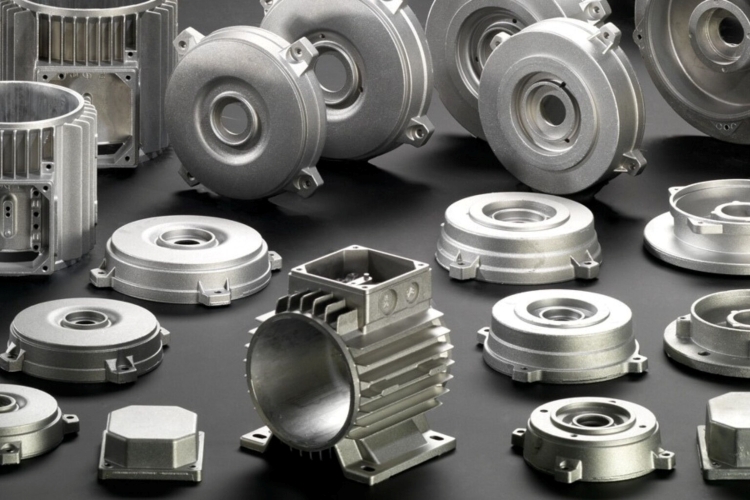- No.3, 327 S.V.P.Road, Makharai House, Mumbai- 400004, INDIA
- sales@ariesalloys.com
Aerospace Aluminum
- Home
- Aerospace Aluminum

Aluminum-Based Alloys in Aerospace Applications: Composition, Standards, and Performance
Aluminum-based alloys are among the most widely used materials in the aerospace industry, offering an outstanding combination of low density, high strength, and corrosion resistance. These alloys are essential for aircraft structures, fuselages, wings, and space exploration vehicles. Their lightweight properties contribute to fuel efficiency and improved performance in aviation and space applications.
Why Aluminum-Based Alloys for Aerospace?
Aluminum-based alloys are selected for aerospace applications due to their key properties:
- High Strength-to-Weight Ratio – Provides structural integrity while minimizing overall aircraft weight.
- Corrosion & Oxidation Resistance – Ensures durability in extreme environments, including moisture and high altitudes.
- Excellent Machinability & Weldability – Allows for complex aerospace component fabrication.
- Fatigue & Creep Resistance – Enhances long-term performance under continuous stress.
- Thermal & Electrical Conductivity – Suitable for heat dissipation in aerospace electronic components.
Aluminum-based alloys are selected for aerospace applications due to their key properties:
- High Strength-to-Weight Ratio – Provides structural integrity while minimizing overall aircraft weight.
- Corrosion & Oxidation Resistance – Ensures durability in extreme environments, including moisture and high altitudes.
- Excellent Machinability & Weldability – Allows for complex aerospace component fabrication.
- Fatigue & Creep Resistance – Enhances long-term performance under continuous stress.
- Thermal & Electrical Conductivity – Suitable for heat dissipation in aerospace electronic components.
Common Aluminum-Based Alloys & Their Aerospace Applications
1. Aluminum 2024
- Applications: Aircraft fuselage, wing structures, and aerospace fasteners.
- Chemical Composition:
- Aluminum (Al): Balance
- Copper (Cu): 3.8-4.9%
- Manganese (Mn): 0.3-0.9%
- Magnesium (Mg): 1.2-1.8%
- Standards: AMS 4037, ASTM B209
2. Aluminum 7075
- Applications: Aerospace frames, structural components, and high-stress parts.
- Chemical Composition:
- Aluminum (Al): Balance
- Zinc (Zn): 5.1-6.1%
- Magnesium (Mg): 2.1-2.9%
- Copper (Cu): 1.2-2.0%
- Standards: AMS 4121, ASTM B209
3. Aluminum 6061
- Applications: Aerospace fuel tanks, tubing, and lightweight structural components.
- Chemical Composition:
- Aluminum (Al): Balance
- Magnesium (Mg): 0.8-1.2%
- Silicon (Si): 0.4-0.8%
- Chromium (Cr): 0.04-0.35%
- Standards: AMS 4027, ASTM B209
4. Aluminum 5083
- Applications: Marine and aerospace cryogenic storage tanks, pressure vessels.
- Chemical Composition:
- Aluminum (Al): Balance
- Magnesium (Mg): 4.0-4.9%
- Manganese (Mn): 0.4-1.0%
- Chromium (Cr): 0.05-0.25%
- Standards: AMS 4057, ASTM B209
5. Aluminum 2219
- Applications: Spacecraft structures, high-temperature aerospace components, and cryogenic tanks.
- Chemical Composition:
- Aluminum (Al): Balance
- Copper (Cu): 5.8-6.8%
- Manganese (Mn): 0.2-0.4%
- Vanadium (V): 0.05-0.15%
- Standards: AMS 4162, ASTM B209
1. Aluminum 2024
- Applications: Aircraft fuselage, wing structures, and aerospace fasteners.
- Chemical Composition:
- Aluminum (Al): Balance
- Copper (Cu): 3.8-4.9%
- Manganese (Mn): 0.3-0.9%
- Magnesium (Mg): 1.2-1.8%
- Standards: AMS 4037, ASTM B209
2. Aluminum 7075
- Applications: Aerospace frames, structural components, and high-stress parts.
- Chemical Composition:
- Aluminum (Al): Balance
- Zinc (Zn): 5.1-6.1%
- Magnesium (Mg): 2.1-2.9%
- Copper (Cu): 1.2-2.0%
- Standards: AMS 4121, ASTM B209
3. Aluminum 6061
- Applications: Aerospace fuel tanks, tubing, and lightweight structural components.
- Chemical Composition:
- Aluminum (Al): Balance
- Magnesium (Mg): 0.8-1.2%
- Silicon (Si): 0.4-0.8%
- Chromium (Cr): 0.04-0.35%
- Standards: AMS 4027, ASTM B209
4. Aluminum 5083
- Applications: Marine and aerospace cryogenic storage tanks, pressure vessels.
- Chemical Composition:
- Aluminum (Al): Balance
- Magnesium (Mg): 4.0-4.9%
- Manganese (Mn): 0.4-1.0%
- Chromium (Cr): 0.05-0.25%
- Standards: AMS 4057, ASTM B209
5. Aluminum 2219
- Applications: Spacecraft structures, high-temperature aerospace components, and cryogenic tanks.
- Chemical Composition:
- Aluminum (Al): Balance
- Copper (Cu): 5.8-6.8%
- Manganese (Mn): 0.2-0.4%
- Vanadium (V): 0.05-0.15%
- Standards: AMS 4162, ASTM B209
Aerospace Industry Standards for Aluminum-Based Alloys
Aluminum-based alloys used in aerospace applications must adhere to strict industry standards for quality and safety:
- ASTM (American Society for Testing and Materials) – Defines material composition and mechanical properties.
- AMS (Aerospace Material Specifications) – Establishes performance requirements for aerospace applications.
- MIL-A (Military Specifications for Aluminum Alloys) – Governs aluminum use in military and defense aerospace projects.
- ISO (International Organization for Standardization) – Ensures global compliance and quality control.
Aluminum-based alloys used in aerospace applications must adhere to strict industry standards for quality and safety:
- ASTM (American Society for Testing and Materials) – Defines material composition and mechanical properties.
- AMS (Aerospace Material Specifications) – Establishes performance requirements for aerospace applications.
- MIL-A (Military Specifications for Aluminum Alloys) – Governs aluminum use in military and defense aerospace projects.
- ISO (International Organization for Standardization) – Ensures global compliance and quality control.
Conclusion
Aluminum-based alloys are indispensable in aerospace applications requiring lightweight structures, high strength, and corrosion resistance. Aries Alloys supplies premium-quality aerospace-grade aluminum alloys, ensuring compliance with international standards for optimal performance in aviation and space exploration.
For more information on our aluminum alloy inventory, contact Aries Alloys today!
Aluminum-based alloys are indispensable in aerospace applications requiring lightweight structures, high strength, and corrosion resistance. Aries Alloys supplies premium-quality aerospace-grade aluminum alloys, ensuring compliance with international standards for optimal performance in aviation and space exploration.
For more information on our aluminum alloy inventory, contact Aries Alloys today!
